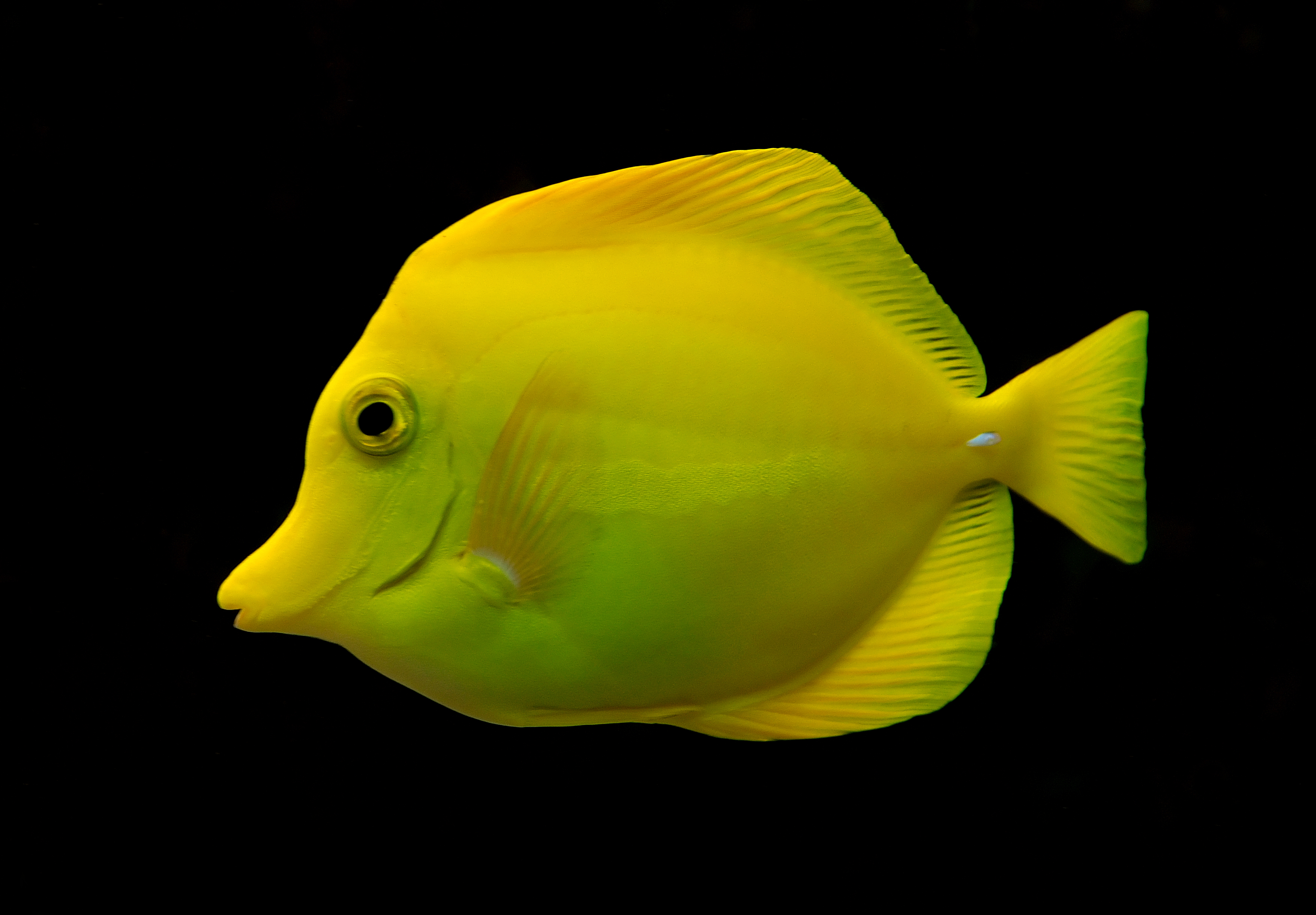- Yellow tang
Taxobox
name = Yellow Tang

image_width = 250px
regnum =Animal ia
phylum = Chordata
classis =Actinopterygii
ordo =Perciformes
subordo =Acanthuroidei
familia =Acanthuridae
genus = "Zebrasoma "
species = "Z. flavescens"
binomial = "Zebrasoma flavescens"
binomial_authority = The yellow tang ("Zebrasoma flavescens"), also called "naughty tang", is a saltwaterfish species of the familyAcanthuridae . It is one of the most popularaquarium fish.Appearance
Yellow tangs are in the surgeonfish family. Adult fish can grow to 18 centimeters (approximately 6 to 7 inches) in length, and 1 to 2 centimeters (roughly .5 to .75 inches) in thickness. Males tend to be slightly smaller than females. All individuals of this species are bright daffodil yellow in color. At night, the yellow colouring fades slightly and a prominent brownish patch develops in the middle with a horizontal white band. They rapidly resume their solid bright yellow color with daylight.
They have an arrow-like shape due to their dorsal and
ventral fins being almost an extension to their bodies, and a long snout-like mouth used (as with other tangs) to eat thealgae off rocks andcoral . They also have a sharp spine located near their tail. They are almost fullyherbivores , and have become a popular fish for marine aquarists of all skill levels, as the fish tends to be active, hardy, and nonaggressive when kept with dissimilar species.Food
Wild grasses,
algae , caulerpa and other plant life in general. The yellow tang can also be found eating shrimp and other smaller animals and readily adapts to meat/fish based aquarium food. In the wild, shoals of Yellow Tang will provide cleaner services (into adulthood) to larger fish and turtles, by removing algal growth and dead tissue.They are also attracted to bright and shiny things and may attack them in some cases - one excellent method of trapping Tangs is to use a mirror at the back of a trap instead of bait, capitalising on the animal's natural territorial aggression.
Distribution and habitats
It is commonly found in shallow
reef s, from 2 to 46 m deep, in the Pacific and Indian Oceans, west ofHawaii and east ofJapan .In the Aquarium
The yellow tang is very commonly kept as a saltwater aquarium fish. They can grow up to 8", although 6" is more common in noncaptivity. They require an
aquarium of at least 90 gallons, while 125+ gallons is even better. They areherbivores , and are relatively easy to feed. They are usually very hardy, although, like all Tangs, are quite susceptible to Ich, HLLE (Head and Lateral Line Erosion) and other common saltwater diseases. They are semi-aggressive fish. They normally get along fine with other semi-aggressive fish close to their own size. Can be kept very well with other yellow tangs in pairs or in a group in large aquariums (100+ gallons). Possible other tankmates include fish likecardinalfish , largeclownfish ,lionfish , eels, or other different-looking Tangs like theblue tang orAchilles tang . They are reef-safe, and can be kept with anyinvertebrates in a reefaquarium . Please be sure to take good care of the fish and do plenty of reaserch before you purchase one.Trivia
* In the film
Finding Nemo the character Bubbles is a yellow tang.
* Yellow tangs are Hawaii's largest marine fish export, and one of the worst popular fish in the U.S.
* Yellow tangs are one of the viewable fish in Nintendo's Endless Ocean for the Wii.
* Gregg "Opie" Hughes from the popular Opie and Anthony radio show has on several occasions expressed fear and loathing for yellow tangs, which nipped him unmercifully during a scuba excursion.References
*
*External links
* [http://www.aquariumdomain.com/species/tang_yellowTang.asp AquariumDomain] Complete Resource for the Marine Aquarium Hobbyist.
Wikimedia Foundation. 2010.
